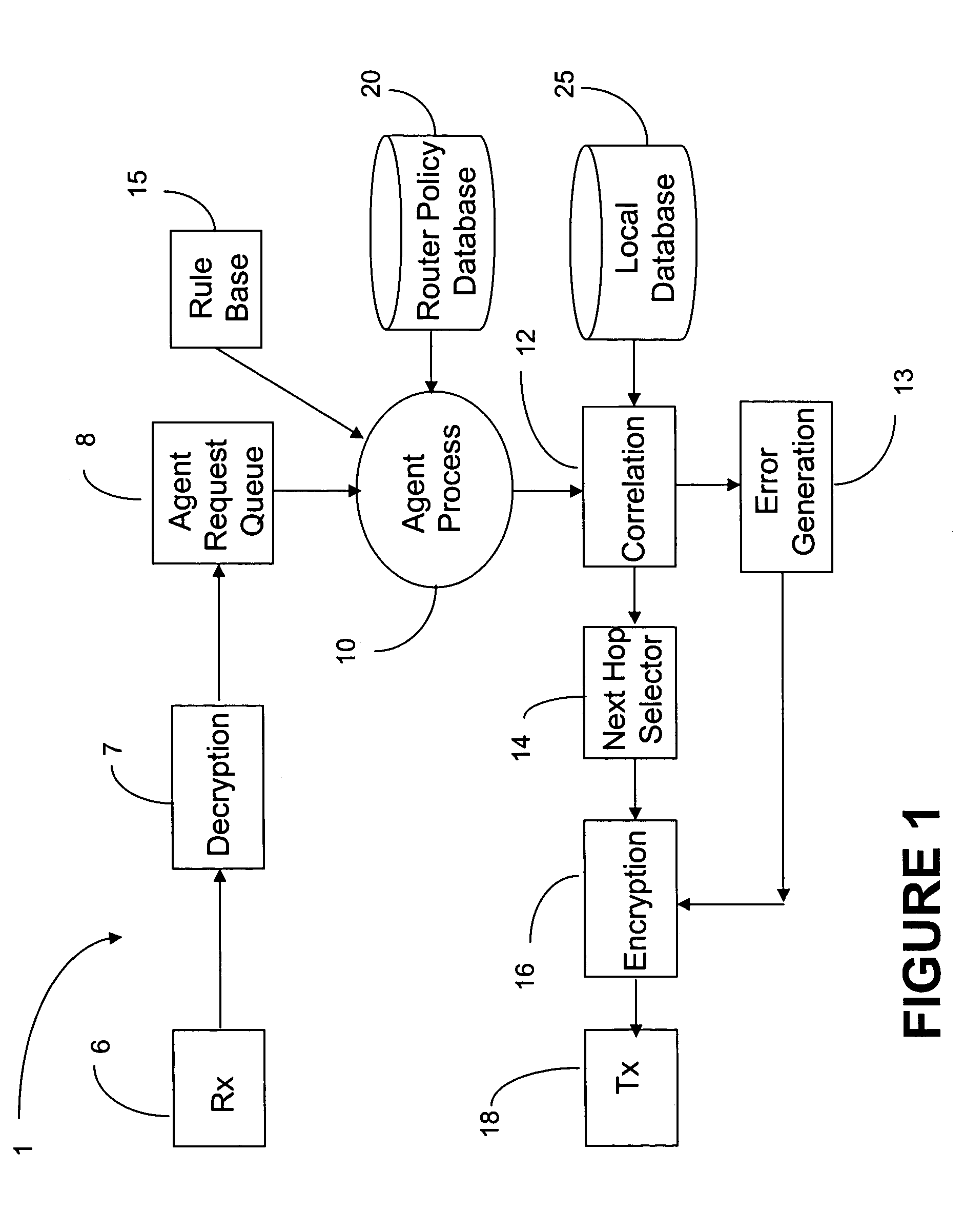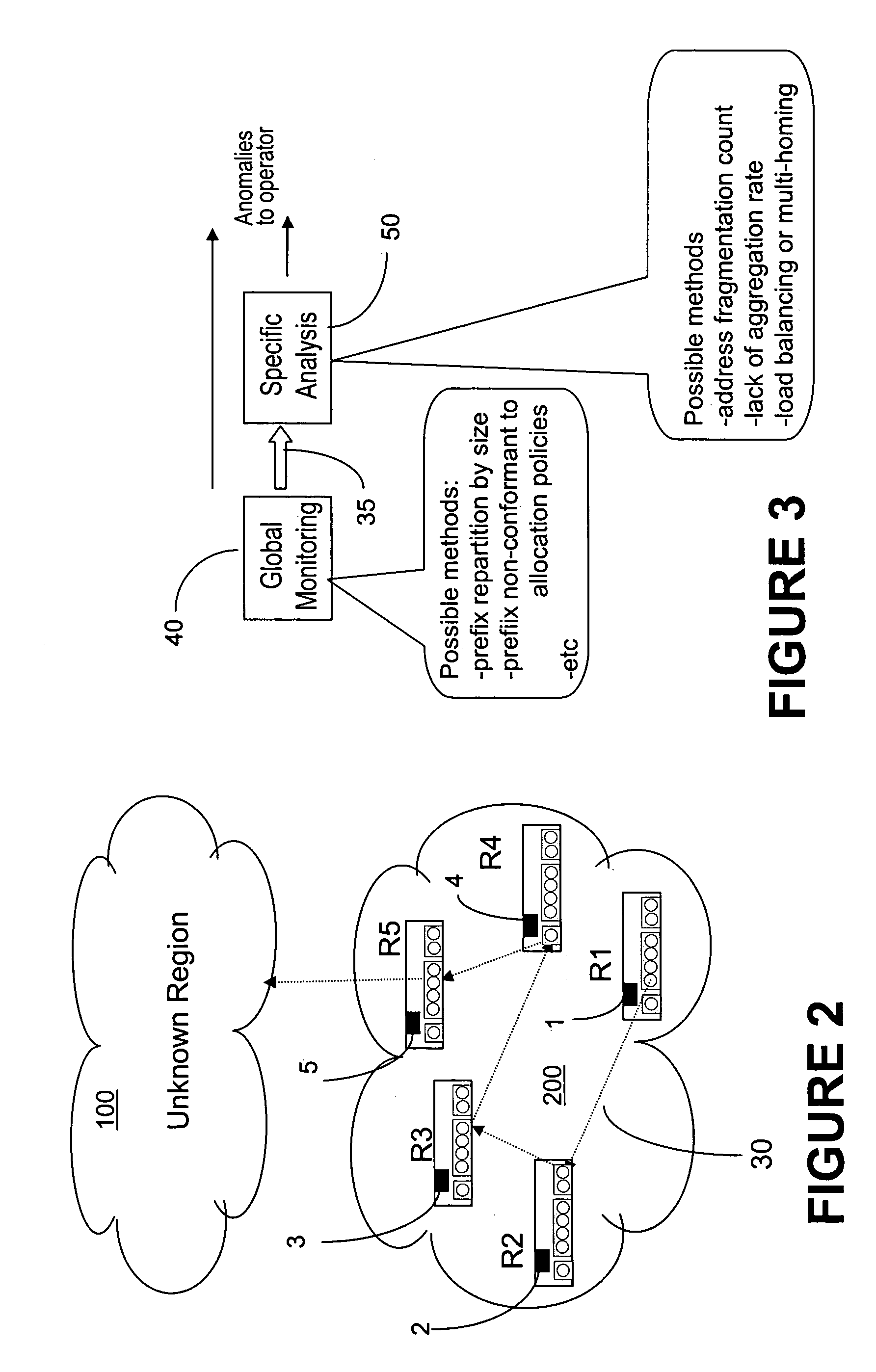Agent based router monitoring, diagnostic and maintenance
a technology of agent-based routers and routers, applied in the field of communication networks, can solve the problems of large network resources required by centralized monitoring, diagnostics and maintenance tools in order to effectively manage the network, and many problems are not detected
- Summary
- Abstract
- Description
- Claims
- Application Information
AI Technical Summary
Benefits of technology
Problems solved by technology
Method used
Image
Examples
Embodiment Construction
[0025]FIG. 1 shows the main units of a monitoring, diagnostics and maintenance agent mechanism 1 (herein called agent) according to an embodiment of the invention. Agent 1 is embedded in an existing network device (router or switch) and is always present. The agents described here are not just client agents, but rather they are in a client-server relationship with all neighboring agents they communicate with. A neighboring agent here is an agent located on a network device physically connected to the device hosting the agent under consideration.
[0026]Each agent exchanges with neighboring agents data relevant to the network device operation, for enabling detection or faulty operation and also for enabling consolidation of messaging with the NMS (network management system). In this specification, the term ‘data’ is used to specify any type of information relevant to operation of the router, including performance monitoring data, messaging, alarms, etc. It is to be understood that this...
PUM
 Login to View More
Login to View More Abstract
Description
Claims
Application Information
 Login to View More
Login to View More - R&D
- Intellectual Property
- Life Sciences
- Materials
- Tech Scout
- Unparalleled Data Quality
- Higher Quality Content
- 60% Fewer Hallucinations
Browse by: Latest US Patents, China's latest patents, Technical Efficacy Thesaurus, Application Domain, Technology Topic, Popular Technical Reports.
© 2025 PatSnap. All rights reserved.Legal|Privacy policy|Modern Slavery Act Transparency Statement|Sitemap|About US| Contact US: help@patsnap.com



